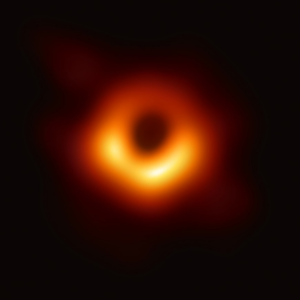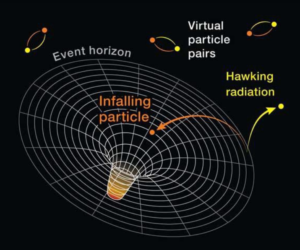The death of Black Holes: No monster is invincible
We’ve known monsters to hide in plain sight and camouflage themselves. A true villain would indeed be somebody who stays hidden and never gets caught. Once a monster is seen and recognized, the path to its destruction is spontaneously laid out. Our universe has known of many such monsters, but one that stands out and is truly seen as the most powerful and invincible is a black hole. Why are we calling the black hole a monster?
Well, because it shows all the traits of one. Black holes are greedy parasites, which survive by eating up any stellar matter like stars and gases around them which come too close and grow bigger and stronger. Black holes are regions of spacetime with gravity so strong that even electromagnetic radiation, such as massless photons of light, cannot escape them. These monsters can be of different sizes, ranging from stellar-mass black holes which can have a mass of 5 to 100 times that of the sun, and supermassive black holes, which can reach over a billion solar masses! It is believed by most astronomers that these monsters hide within the heart of most galaxies.
As an object comes in the vicinity of a black hole, it accelerates into it, in a circular motion. In some ways, this can be compared to the properties of a whirlpool in the sea. However, this whirlpool is three-dimensional. This whirlpool is often termed the accretion disk. As matter approaches the black hole, it is torn apart. As it accelerates, stray particles of matter collide with each other and generate friction. Black holes, like any other monster, try to stay hidden.
They are known to be perfectly black bodies, emitting no light. Up until a few years ago, it was hypothesized that there is no way to see a black hole. However, in recent times, it appears that their gluttony causes their ultimate demise. As the particles accelerating into a black hole collide and generate friction, they create energy, which ultimately causes the accretion disk to glow.

The accretion disk of a Black hole
Indeed, a Black hole cannot be seen. But the accretion disk creates a contrast and a shadow, ultimately revealing the monster. This glow around the black hole is termed the Event horizon. Beyond this point, the black hole eats up the particles and the glow dies out. The event horizon does not only expose the monster, it also ultimately causes its demise. Physicists always called the event horizon a point of no return, and they were quite right to say so in the era of classical Physics. Technically, Black holes should never die, as they keep eating and never radiate anything, not even light.

The actual image of the Black hole at the Heart of Messier 87 Galaxy
However, as soon as Quantum mechanics comes into the picture, all that we know seems to tumble down. In 1974, Stephen Hawking proved that escape from a Black hole is possible if Quantum mechanics are taken into consideration. This, however, is very slow. Does that not make sense? We are with you. Let’s explore this a bit more. Vacuum may seem to be devoid of free energy, but in reality, it isn’t. Quantum mechanics says that even a vacuum-like space has energy fluctuations.
But how can energy exist in nothingness? Well, the hypothesis is quite simple in the most complicated way. Hawking says that these energy fluctuations manifest as pairs of particles that pop into existence and annihilate almost immediately. These are called a particle and an antiparticle. This happens throughout the universe. However, the first law of thermodynamics states that: energy can neither be created nor destroyed. Thus, how are we creating particles from nothing?
This question is explained by the fact that these particles are not our everyday particles. One of the particles has positive energy, and the other, antiparticle, you guessed it right has negative energy! Thus, the net energy stays zero. The concept of negative energy is still very controversial. However, how are these pairs of particles relevant to the death of a black hole? The concept is pretty simple. Let us consider a scenario, where these particles are created just near the event horizon.
However, here’s the catch. Before they are able to annihilate, the antiparticle crosses the event horizon, while the particle doesn’t. The particle escapes the black hole. In this scenario, if we look at the series of events from a layman’s perspective, we can say that the black hole ejected this particle! Why are we saying this? Well, because, this particle would have had no existence had it been able to annihilate, but the black hole did not let it. This particle is termed Hawking radiation, the only radiation that comes from a Black hole.

A pictorial description of hawking’s radiation
To look at it from a different perspective, we know that the antiparticle entered the black hole and that it has negative energy. According to Einstein’s theory of Relativity:
E = mc2
Where E is the energy, m is mass and c is the speed of light. We know that c is always constant, as that is the law of the universe. However, what if, in this scenario, E is negative? The mass will have to balance this negative energy with a negative sign. Thus the equation becomes:
-E = (-m)c2
-E makes sense. But what does -m imply? The negative sign simply implies that mass is being ejected from the black hole. In other words, to balance the negative energy absorbed by the black hole, it releases mass. This released mass is Hawking’s radiation. Hawking’s radiation can be seen from different perspectives, to ultimately result in the same destiny: The evaporation of the black hole. However, it is quite obvious that this radiation is quite slow. In addition, the black holes continue to cheat death by eating more matter. Currently, the universe is in the Stelliferous Era, where new stars and galaxies are constantly being created, thus giving them more food and fuel.
However, as the universe approaches the degenerate era, it will stop making more stellar entities. Ultimately, they will run out of fuel and will continue to evaporate. However, this process takes a very long time. Supermassive black holes will require approximately a googol, or 10100 years to fully evaporate. The age of the current universe is hardly a fraction of this time. The evaporation of Black holes also strongly depends on their mass. Smaller Black holes evaporate faster. As they evaporate and lose mass, the rate at which they lose mass also increases, until the point where all the remaining energy escapes at once.
This energy can be seen as a burst of light in the final tenth of a second of a black hole’s life. According to Priyamvada Natarajan, a researcher at Yale University, this burst of light can be compared to a million nuclear fusion bombs going off at once. This might seem quite significant for the Earth, but not so much for the universe. The most powerful Supernova recorded yet (ASSASN-15lh) was 22 trillion times more explosive than a black hole will be in its final moments. It doesn’t really matter how big a black hole was, the end is exactly the same. The fireworks have the exact same intensity.
In the words of Stephen Hawking, “Consideration of particle emission from Black holes would seem to suggest that God not only plays dice, but sometimes throws them where they cannot be seen”. No monster is invincible, and even black holes indeed will die. However, as far as we are concerned, it will take an eternity.
Enjoyed reading this article? Consider reading: The amazing Black holes – Everything you need to know




1 Comment
Larissa
What i do not understood is in reality how you are no longer actually much more smartly-appreciated than you might be right now. You’re very intelligent. You realize thus considerably in the case of this topic, made me for my part imagine it from numerous various angles. Its like men and women aren’t involved until it is one thing to do with Lady gaga! Your personal stuffs excellent. Always maintain it up!|